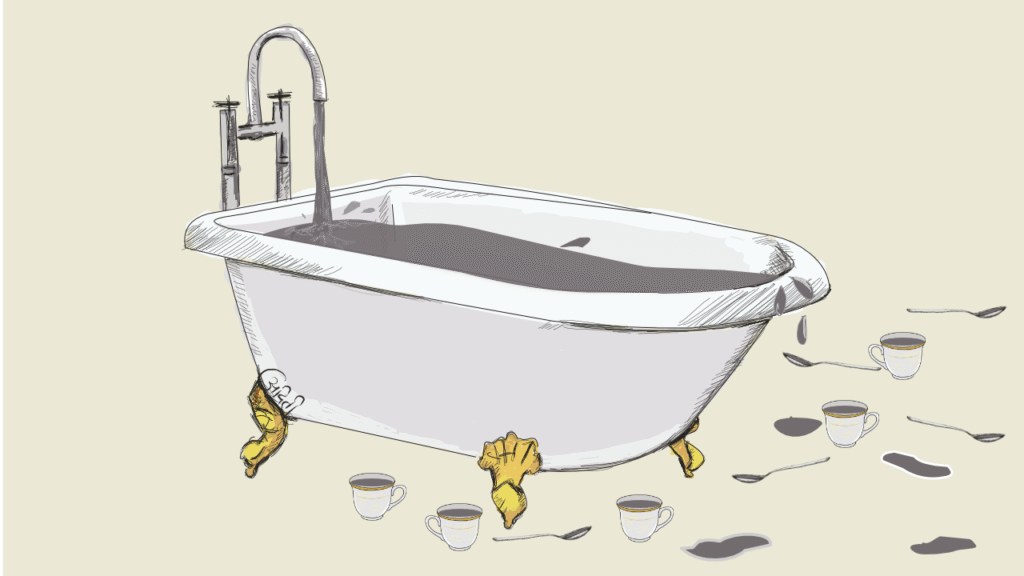Most environmental efforts stop at awareness and small fixes, but real change comes only from solutions that tackle problems at their root. Inspired by the Yamuna River’s pollution crisis, this article explores why “turning off the tap” must be our guiding principle. To address challenges like waste, pollution, and climate change, we need solutions designed to truly solve the problem — not just manage its symptoms.

This illustration was inspired by Ranjit Lal’s Indian Express article about the Yamuna River. The 1,300-km Yamuna receives 80% of its pollution within just 22 km in Delhi. Lal argues that if the source of pollution is known, the logical step is to stop it at the source.
“Turning off the tap” is a powerful phrase. The article inspired both this illustration and several parallels.
Imagine a bathtub with the tap wide open. Water pours in quickly and the tub is nearly full — it will overflow soon. We know action is needed to prevent disaster. But what do we do?
Intuitively, we know the real solution is to turn off the tap. Yet we busy ourselves scooping water with cups and spoons, convincing ourselves this is progress. Our comfort with small measures delays what truly matters: stopping the flow at its source.
So we grab spoons and cups and start bailing. We invite friends and family; they bring others. The number of cups grows, people unite behind a common goal, and a community forms.
Does the problem get solved? Not really — it persists, just as severe as before. We spend time and resources collecting more cups and spoons, but the source remains unaddressed. Yet the problem remains unsolved.
Was it all futile? Not entirely. We raised awareness, built community, and inspired people to commit time and energy to a larger cause. Those are real gains — but they won’t solve the problem. No matter how many spoons we gather, even over decades, the underlying issue will remain.
Given the scale of problems like waste, pollution, and climate change, can we afford to invest energy in measures that don’t directly help shut off the source? Shouldn’t we design solutions that actually solve the problem they target?
A key test for any proposed solution should be whether it helps turn off the tap — wholly or at least partially. Ideate, pilot, implement, fail fast, iterate, course-correct — do whatever it takes. But let’s focus on designing solutions that truly solve the problems they are meant to solve.